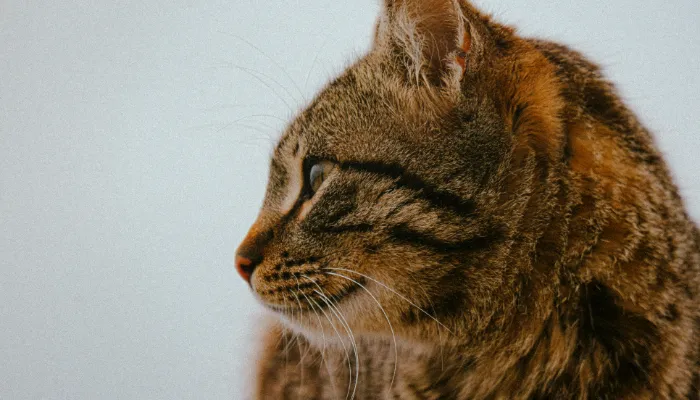Every cat owner knows that cats express themselves in a unique fashion and it is not easy gauging their feelings. If you get the feeling that your cat friend is giving you an unnecessary cold shoulder or flat-out ignoring you, you would like to know, how do cats say “I Hate You” Luckily, a little diligence and analysis of their body movement and sounds will help you in interpreting these puzzling messages. A cat translator can work wonders in helping us understand the emotions of your cat.

Understanding the Signs of Displeasure
Cats are experts in expressing themselves through their body language. When happy and content, a cat is loose and movement is fluid. However, while being angry or agitated, a cat’s actions can change drastically. And, how do cats say “I Hate You”? Here are some signs to watch for:
- Tail Flicking: Flicking as well as bending a cat’s tail can mean various things like enjoyment, agitation, or even aggression. If the tail is static, the cat is furious.
- Hissing: A hissing sound is produced when a cat pulls their ears back and fangs out; this indicates that the cat is angry towards something.
- Ears Flattened Back: If a cat’s ears are flat against their head, it indicates that the cat is feeling aggressive or uncomfortable.
- Avoidance: A cat that, for whatever reason, ‘dislikes’ her owner may keep avoiding contact by staying beyond reach and therefore hiding from you.
- Growling: This is an obvious vocal sign that a cat is displeased – unhappy. When a cat growls, it can be a sign that they are feeling angry, and if provoked can lead to an attack.
A little growl might warn you that action is needed. Pay attention to these body language signals because it shows how unhappy your cat is. Depending on the circumstances, you will be able to determine what the issue is so you can give the cat withdrawal space or solve the problem that has made the cat annoyed.
Cat Behavior: When Your Cat Acts Cold
How can you know when your cat is feeling distant? What are the tell-tale signs that they are unapproachable? how do cats say “I Hate You”? Here’s what could happen when your cat is not pleased:
1. Ignoring Attention
- A cat may be disinterested in your attention and decide to ignore you altogether. While some cats may do this passively, others would just say it outright by telling you, “I want my space.”
2. Aggressive Behavior
- If they display their teeth or keg back for an arch when trying to pet them, they might be annoyed or need some discomfort. There is some aggression inside their body language which permits no interest in exiting the socialization sphere.
3. Sore Losers
- As cats and humans share some common traits such as being passive-aggressive, felines can be sore losers too. Although you may prefer the standard approach of addressing disputes, with your cat, it’s less likely and instead hinges on sore losing wherein the ignoring approach is taken up.
Understanding the signs when your feline shows withdrawal will aid you in further comprehension of their emotional state. With this understanding, coming up with new ways to ease tension between you and your cat can be achieved so long as you approach it calmly.
How Cats Use Their Eyes to Express Displeasure?
Another way by which cats show their negative feelings is through the eyes. Have you ever stared at your cat and thought, how do cats say “I Hate You”? Let’s explore the way their eyes show feelings:
- Dilated Pupils: Arms open – These pupils suggest there is danger or a menace in sight. If they are wide and your cat appears to be aggressive, it is best to leave them alone.
- Slow Blinking: A slow blink is not only normal, it is caused by affection. Slow blinks may indicate curiosity. But if they are wide and fixed, instead of looking at you, it means they are afraid or in protective mode.
As you can see, your cat’s eyes can tell whether he is angry or feeling down. Knowing this enables you to help them take the right action or not.
How Do Cats Use Their Surroundings to Say “Yes”?
We may now move to the reasons that may explain why some cats may show aversion or hate towards their owners. how do cats say “I Hate You”? Below are possible explanations for these actions:
1. Lack of Routine
- Cats tend to react negatively externally when there are critical changes to their environment or daily routine. This can include changing or increasing the number of pets inside the household, moving houses, or changing their feeding and grooming schedules.
2. Over Socialization, Trust Issues
- Having not been socialized well during its formant phase, a kitten may develop trust issues towards humans which increases the chances of it disliking or hating humans per se.
3. Having A Negative Background
- Like all other creatures, animals too have memories that shape their actions. if a cat has been abused or treated with negligence in the past, it may associate humans with pain and may become aggressive towards them.
Attempting to explain such bizarre behavior fostered by hate may require picturing one’s and the pet’s social experience. Instead of having negative emotions towards each other, the goal should be to build upon healthy positive interactions.
Signs of Affirmation in Cats
If your furry friend seems somewhat disappointed or annoyed, that is not enough reason to conclude that your pet relationship is beyond redemption. Here’s how to deal with your pet:
- Give Some Alone Time: Every pet has their social boundaries as well. If they are not in the mood for attention, try to let them relax a little.
- Provide Treats: Try to give them treats or shower them with affection when they decide to act tame and friendly.
- Avoid Overly Welcoming Contact at First: When they try to pick you up but you do not want them to, throwing a fit should be allowed as they will be forced to come to you when they want.
But the most important fact that one must remember is that every cat owner has faced certain challenges and so with patience, it can reach a state of rest. Understanding cats and their emotions will certainly promote a favorable pet environment for all parties involved.
Conclusion
Summing Up, cats have fascinating techniques for showing their feelings which includes showcasing expressed dislike or irritation. So, how do cats say “I Hate You”? The method combines body movements, vocal sounds, and certain gestures that portray distaste. In rebuilding your relationship with your pet, and your cat and ensuring that they feel understood and loved, you can achieve that through understanding and a little assistance from a cat translator.
